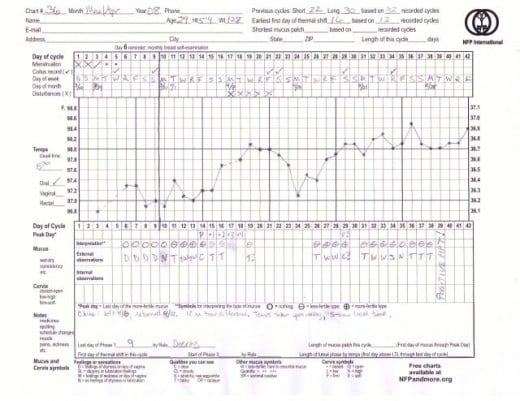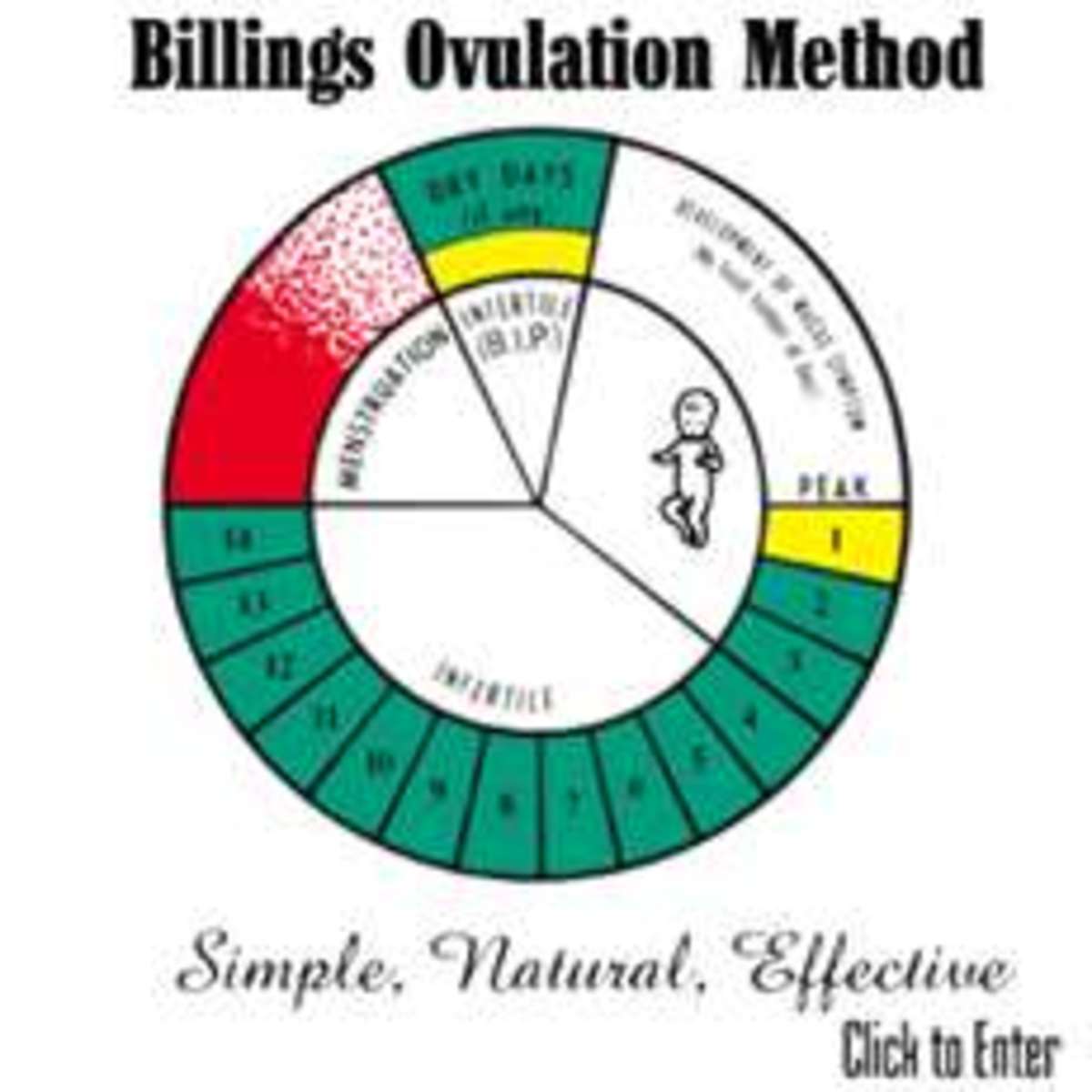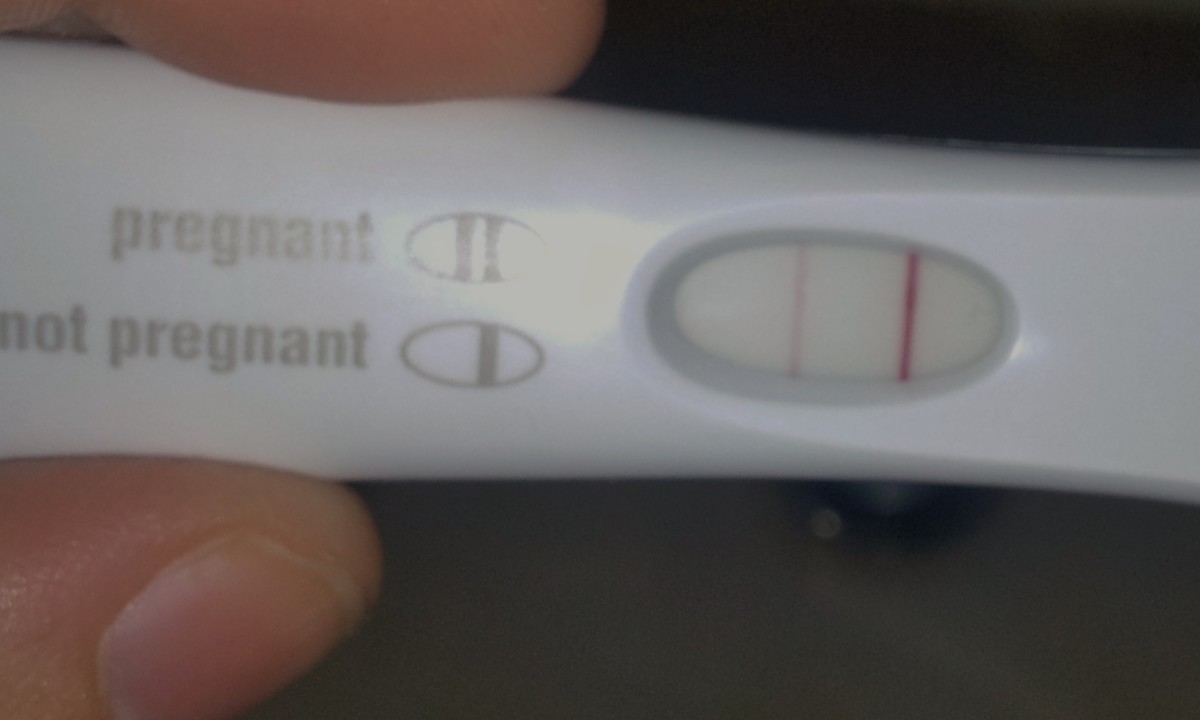- HubPages»
- Health»
- Women's Health»
- Pregnancy
Read Your Body's Fertility Signs and Double Your Chances of Getting Pregnant
It takes the average couple 6-12 months to conceive a child, and these months can be exceedingly disappointing when all you can think about is seeing two blue lines on a little white stick.
What if I told you that you can possibly cut that time in half simply by learning more about your body? It's true. Couples who learn about their fertility using Natural Family Planning achieve pregnancy within an average of 3-6 months. Personally, I used natural family planning to conceive my second and third children in 1 and 2 months, respectively. Tragically, my third pregnancy ended in a late miscarriage/stillbirth. We are again using NFP to help us conceive, and I expect to achieve pregnancy within one to two cycles yet again.
Read About My Experience Losing Jenny
- Losing Jenni Grace
At 23 weeks pregnant, I gave birth to my precious daughter, who had passed away at 19 weeks gestation. This is her story. - Miscarriage From a Catholic Perspective
In the days following her delivery, I came to understand several things regarding my late miscarriage, the value of her short life, and the promise that we are still connected and that I will see her again.

What is Natural Family Planning?
Natural Family Planning (NFP) is traditionally thought of as a natural and "Catholic" way to avoid pregnancy, but it can also be used to help couples achieve pregnancy as well. Based on the scientific, measurable and observable signs that occur throughout a woman's cycle, NFP teaches women to recognize their fertile and infertile times of the month. By charting her specific fertility signs each month, a woman can pinpoint her specific ovulation day and time intercourse to the days of the month that she is most likely to get pregnant. Couples around the world regularly use this information to help them achieve pregnancy.
Natural Family Planning offers several options for monitoring your fertility. You can use any of them alone or in combination with each other to further pinpoint your best chances for conception.
Two extremely common reasons couples have trouble conceiving are that they are not "trying" during their most fertile time and/or the woman does not have good quality mucus during her most fertile time. Recording your temperature and monitoring your MC may help your resolve these issues without the assistance of expensive fertility doctors and drugs. At the very least, you can quickly determine if these are not the issues and get the fertility help you do need faster. Many doctors won't look into fertility issues until a couple has been trying for a year, but will do so if the couple has been charting and had no success within six months.
Basil Body Temperature
Women are often told that they ovulate around day 14 of their cycle each month, and are left wondering why they are not getting pregnant by engaging in intercourse around this time. While the "typical" woman ovulates around day 14, millions of women actually ovulate several days earlier or later this. They struggle to get pregnant because they are focusing their times of intercourse on the "typical" ovulation day, instead of their specific ovulation day. By recording your basil body temperature every day for 2-3 cycles, you can pinpoint your body's typical ovulation day and drastically increase your chances of achieving pregnancy.
Predicting Ovulation
Basil body temperature is a fancy term for your waking temperature, which changes as your body moves through your fertility cycle. Typically, your basil body temperature stays steady within .2 degrees of baseline before ovulation. Your BBT baseline is your body's typical waking body temperature throughout the day. A woman's BBT reaches its lowest point on the day prior to ovulation and then maintains an increase of about .4 degrees on the days following ovulation. By charting your temperature for 2-3 cycles and watching for this increase, you can figure out exactly when in your cycle you typically ovulate and then focus your times of intercourse around that day.
Predicting Pregnancy and Miscarriage
If you do not conceive, your temperature will return to normal around the time your period is due. If you do conceive, your temperature will remain elevated around half a degree through your missed period (about 18 days) and throughout your first trimester of pregnancy.
Your temperature stays elevated due to the extra progesterone supporting the pregnancy. If you notice a sudden drop in temperature after the 18th day, this could indicate that you are at risk of miscarrying. Contact your doctor immediately to have your progesterone levels checked. It may be possible to receive progesterone shots to save the pregnancy. If you have a history of miscarriage, ask your doctor to check your progesterone levels during your next pregnancy. If they are low, you can have progesterone injections throughout your first trimester and hopefully go on to deliver a healthy baby.
Tips and Facts
- Be sure to take your temperature with a basil body thermometer, found at most pharmacies.
- Take your temperature at the same time every morning, immediately after waking and before getting out of bed, or drinking.
- You can take your temperature orally, rectally or vaginally, but be sure to take it the same way every time.
- Know that your temperature can be affected by things like drinking alcohol, getting less than 5 hours of sleep, fever, and heating blankets.
- BBT will not help you achieve pregnancy in the first few couple of cycles as you can not see that you have ovulated until after the fact. However with a little patience, it can be extremely helpful in the months following your initial charting.
- Charting the BBT sign can be very helpful for women who believe they may have irregular cycles, or who are unfamiliar with monitoring their cervical mucus sign.
Reading your basil body temperature is a little more complicated than I can explain for the purposes of this article. I have tried to give you the basic rule for determining the day of ovulation, but your specific temperature shift may not be the "classic" .4 degrees. There are several other rules you can use if this is the case. If you are interested in using this method, I would suggest the following books:
For More Information, Download the E-Book From:
- Natural Family Planning, NFP
Natural Family Planning (NFP) is a way of following God's Plan for achieving and/or avoiding pregnancy. It consists of ways to achieve or to avoid pregnancy using the physical and moral means that God has built into human nature.

Many women have seen immediate success by taking Mucinex or Robitussin to improve the quality of their CM.
Cervical Mucus Sign
The easiest way to identify impending ovulation is to watch for changes in cervical mucus (CM). After your period a you will typically have a few dry days in which you notice a dry sensation and that you have no observable CM. Typically around day 6 or 7, you will start to notice thick, sticky CM. As you get closer to ovulation, CM increases, and becomes cloudy, thinner and slightly stretchy. This CM indicates that you are entering a your fertile phase. Your CM will continue to increase and right before ovulation, it will become watery, clear and very stretchy. This is your most fertile time. After ovulation, your CM will diminish, becoming cloudy and tacky again before disappearing. You are no longer fertile after the third day of diminishing CM.
Quality of CM Around Ovulation is Important
As CM becomes thin and very stretchy, it becomes easier for the sperm to make their way to the egg. If you notice that your CM is not becoming thin and stretchy like the image to the right, the sperm may not be able to reach the egg. You should talk to you doctor about what you can take to improve the quality of your CM or try this home remedy.
Many women have had great and very quick success with this remedy. Take 1-2 tablespoons of a cough syrup containing guaifenesin as the active ingredient, or take one Musinex pill a day in the days proceeding ovulation. Either way, you want to take between 600 and 1200mg of guaifenesin a day. Guaifenesin is used to thin out nasal and chest mucus to help relieve cold symptoms, but it also thins out the CM, creating a better environment for the sperm's mobility.
Tips and Facts
- The day after having intercourse, check for CM later in the day or in the evening to avoid confusing it with semen. Even still, it may take some practice to distinguish between the two.
- This sign can be used immediately and alone to determine when you are ovulating, but it may take a few cycles to get comfortable identifying the different types of mucus.
- You should not see alternating patches of dry days and wet days. This is commonly seen during menopause, and times of breastfeeding infertility If you are consistently noticing that your CM is not following the pattern I described above, you should talk to your doctor about possible causes for this.
Cervix Sign
You can also monitor your cervix to help you determine your fertility window. At the beginning of your cycle, your cervix is low, firm but slightly open to allow the menstruation. It will feel the tip of your nose. As you move toward ovulation, it begins to rise, becoming higher, softer and more open. At your most fertile time, just before ovulation, it will be in its highest position, open and soft. It may feel like your cheek or be so soft and open that it blends in with the vaginal walls and you can no longer feel it.
Putting it All Together
Signs Of Infertility
| Signs of Fertility
| Signs of Impending Ovulation
| Signs of Pregnancy
|
|---|---|---|---|
CM is either not present or not good quality (very tacky, not at all stretchy)
| CM is present. It may be cloudy and is starting to become stretchy
| CM is very strecthy and clear, resembling an egg white and you have a "wet feeling"
| Instead of going back down to nothing, you may notice an increase of CM again
|
Cervix is low, firm and closed
| Cervix is higher in the vagina and softening and has started to open
| Cervix is very high, soft, and open. You may not even be able to feel it now.
| Cervix is high and soft but closed at about 12 days after ovulation
|
Termperature is at baseline, or within .2 degrees, or has remained elevated at least 4 days in a row
| Temperature will not tell you of impending ovulation, it can only be used retrospectively.
| Some women may notice a slight dip in temperature on the ovulation day
| Instead of going back down, your temperature will remain elevated throughout your 1st trimester
|
Many women find themselves much more "in the mood" on their most fertile days.
| Many women notice light cramping or spotting around implantation, which occurs about one week after conception
|
Things to Avoid
You probably know that you should be eating right, taking vitamins and drinking plenty of water, especially if you are trying to conceive, but did you know that there are foods and chemicals that you should avoid if you are struggling to get pregnant?
- Alcohol: Some studies show that alcohol can reduce female fertility dramatically and decrease total sperm count while increasing the production of abnormal sperm.
- Caffeine: If you are struggling to get pregnant, both partners might try eliminating all caffeine. Some studies have suggested that as little as one cup of coffee a day can affect your fertility levels.
- Xenoestrogens: Xenoestrogens, found in environmental chemicals and pesticides, non-organic produce, regular dairy and meats, mimic the hormone estrogen in your body and can cause hormone imbalances that may be keeping you from getting pregnant. You might try switching to hormone-free dairy and meats and try to switch to organic produce. You should also avoid soy and soy protein, as soy contains an extremely high amount of xenoestrogens.
- Men should avoid tight fitting boxers or underwear and avoid allowing their testes from getting overly heated by routinely taking hot baths or sitting in a hot tub regularly.
- Finally, avoid having intercourse every day while you are trying to conceive, especially in the days before you get close to ovulation to allow your partner's sperm count to build back up.
How long did it take you to achieve pregnancy?
I know this is much easier advice to give than to do, but try to relax. These tips can help you achieve pregnancy, but ultimately it is God who gives life. Try to enjoy this time with your spouse and of course time your intercourse for your best chances, but remember to enjoy the process and allow intercourse to be a bonding experience for you as a couple. Good luck and happy baby making! :-)
- 5 Fertility Problems That NFP Charting Can Identify and How to Treat Them - Modern Homemaking: Home
Charting your cycles can help you identify the causes of your infertility or reasons you may be having trouble conceiving. Learn about 5 of the most common fertility issues plaguing women and what you can do about them.
© 2014 Sarah










